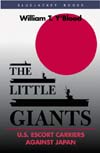In contrast to England, the continental United States was self sufficient in food, oil, and timber. Protection of merchant shipping was never as strategically significant to the US Navy as it was to the Royal Navy. The US Navy focused on traditional battle fleet operations, and left care of merchant shipping to the Coast Guard. As late as 1940, the major shipbuilding program for the United States "two ocean navy" included only battleships, cruisers, destroyers, aircraft carriers, and submarines. No separate provision for escort construction was undertaken until operation Paukenschlag dramatically demonstrated the need in 1942. Even then, the name "destroyer escort" revealed US Navy disdain for Royal Navy sloops and frigates.
United States had built 272 "flush deck" destroyers during the first world war. United States need for newer destroyers developed largely from evolution of aircraft carrier operations. Converted battle cruisers Lexington and Saratoga were fifty percent faster than contemporary battleships when completed as aircraft carriers in 1927. As the tactical possibilities of that speed difference were explored, it became evident that the old flush deck destroyers had inadequate endurance for high speed screening. Destroyer construction resumed after 1932 focused on enabling aircraft carriers to operate independently of the slower battle fleet. Distribution of newer destroyers mirrored distribution of aircraft carriers. Lexington, Saratoga and Enterprise were in the Pacific in late 1941, while Ranger, Yorktown, Wasp and Hornet were in the Atlantic. Yorktown transferred to the Pacific immediately after Japan opened hostilities and Hornet followed a short time later for the April, 1942, B-25 raid on Tokyo. Wasp twice entered the Mediterranean in April, 1942, ferrying spitfire fighter planes to Malta before moving to the Pacific. Each of the transferred aircraft carriers was accompanied by a screen of modern destroyers. Only the slower, lightly protected Ranger remained in the Atlantic, and assignment of modern United States destroyers was similarly weighted toward the Pacific.
The 8 ship FARRAGUT class (DD 348-355), authorized in 1932 and completed in 1934-35, duplicated displacement of the contemporary Royal Navy E class. FARRAGUT introduced the 5"/38 gun which remained standard for US destroyers through the war. Armament of 5 guns was heavier than British destroyers, and stability suffered. Two of these ships capsized in the December, 1944, typhoon off the Philippines. PORTER and SOMERS class destroyer leaders were similarly overgunned.
The 16 ship MAHAN class (DD 364-379), authorized in 1933 and completed in 1936, was similar to the FARRAGUT class with identical gun armament and a third quadruple 21" torpedo tube mount which increased displacement to 1500 tons. The 2 ship FANNING class (DD 384-385) is similar to the MAHAN class.
The 10 ship CRAVEN class (DD 380, 382 & 386-393), authorized in 1934 and completed in 1937, substituted a fourth quadruple 21" torpedo tube mount for one of the 5"/38 guns on identical 1500 ton displacement of the MAHAN class. These ships were credited with 50% greater range than contemporary Royal Navy destroyers. The 12 ship McCALL or BENHAM class (DD 397-408), authorized in 1935 and completed in 1938-39, is similar to the CRAVEN class. These classes carried the heaviest United States torpedo armament as built, but wartime modifications replaced 2 quadruple torpedo tubes with four 40mm guns. Mayrant, Trippe, Rhind and Rowan (DD 402-405) stayed in the Atlantic. Trippe shares credit for sinking U-73.
The 12 ship SIMS class (DD 409-420), authorized in 1936 and completed in 1939-40, reverted to five 5"/38 guns and 3 quadruple 21" torpedo tubes on a new hull design of 1570 tons. Roe, Wainwright and Buck (DD 418-420) stayed in the Atlantic. Wainwright shares credit for sinking U-593. Buck was torpedoed by U-616 off Salerno.
The "two ocean navy" construction program of 1940 produced 1700
ton destroyers variously described initially as BENSON, BRISTOL,
MAYO and/or LIVERMORE classes. After the war, when all older
destroyers had been stricken, the US Navy grouped these
destroyers into a combined BENSON-LIVERMORE class. Later wartime
construction produced the 2100 ton FLETCHER class, the 2200 ton
SUMNER class, and the 2400 ton GEARING class. The latter three
classes spent most of the war in the Pacific.
American DD's by class
| Flush Deckers | 81 |
| Destroyer Leaders | 13 |
| Benham | 12 |
| Benson-Livermore | 96 |
| Sims | 12 |
This is not a complete list.
These American destroyers served mostly in the Pacific
| Fletscher | 175 |
| Allen M. Sumner | 70 |
| Fattagut | 8 |
| Mahan | 18 |
Compiled by Al Wellman


